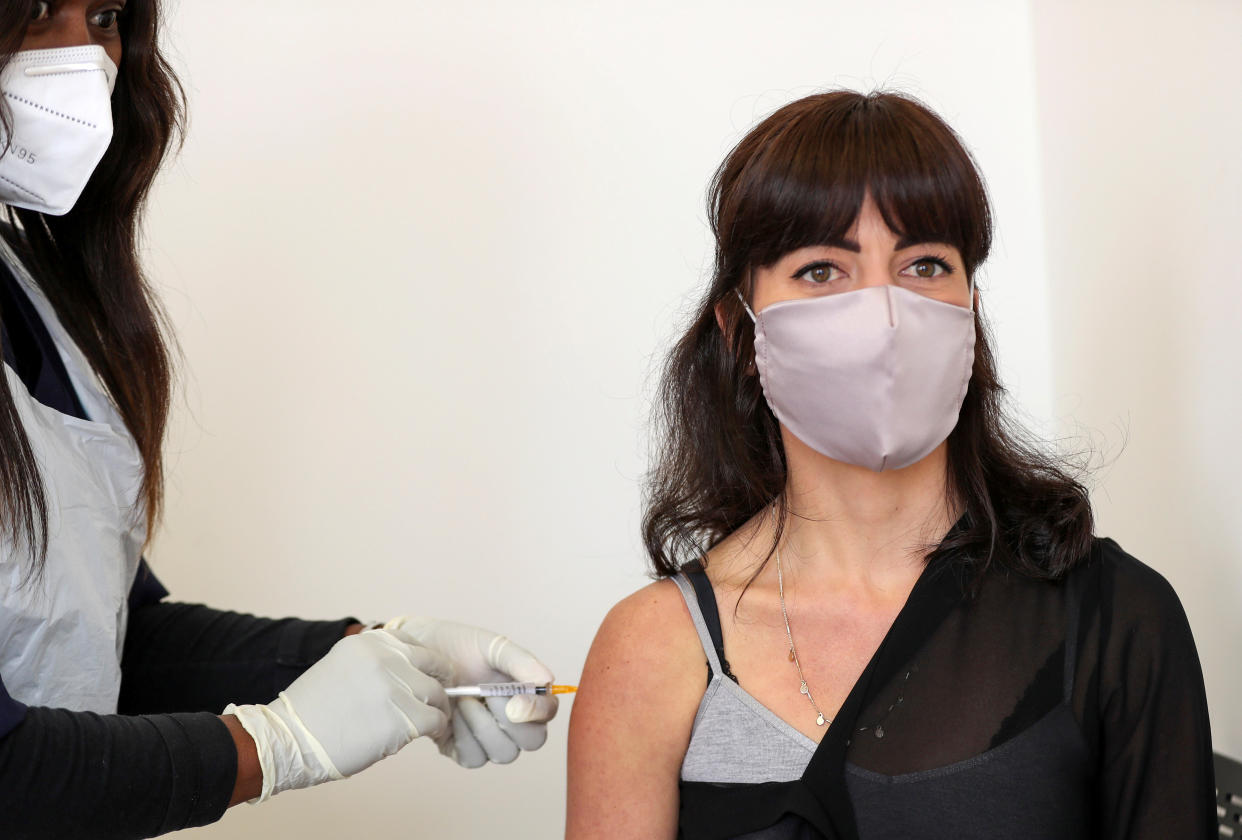Redfield: CDC will have shortened quarantine guidelines in a week
The U.S. Centers for Disease Control and Prevention (CDC) is analyzing data that will reduce the quarantine time required if someone is potentially exposed to the coronavirus, and could have a new recommendation in a week, according to director Dr. Robert Redfield.
In an interview with Yahoo Finance Wednesday, Redfield said, “I do anticipate that we will come out with recommendations that look at a shorter period of quarantine, and a shorter period where you would test out of quarantine.”
He cautioned he doesn’t want to pre-empt the analysis, but he does “expect in the next week or so that data will be completely analyzed and then recommendations will be made based on that data.”
A study by CDC researchers that has not yet been peer-reviewed outlines what the shortened quarantine timeline could look like.
The study showed that in studies of travel-related transmission, a 14-day quarantine after travel, the current recommendation, reduced the risk of transmission by up to 100%, meanwhile, a 7-day window, as well as taking a COVID-19 test a few days after arrival, reduced transmission by up to 99%.
Thanksgiving and small gatherings
With the upcoming holiday and TSA showing a surge in screenings, health experts are worried about post-holiday case trends.
With some regions of the country seeing sustained surges, and health systems buried under the pressure, Redfield warned that the remainder of the year is going to be hard.
It’s why he and others have continued to put a focus on small social and family gatherings, which can lead to spread. Many state and local governments have already put limits on such gatherings, and Redfield noted there are safe ways to do so.
Following mitigation tactics like hand-washing, mask-wearing, maintaining distances and ensuring there is adequate ventilation could be a solution, he said.
Redfield said he celebrated his wife’s birthday Tuesday night, outdoors, with one other couple with significant space between them.
“Yeah, we kept our coats on, and yeah it was cold, but this is the type of thing we are asking people to do. Don’t let down your guard. And many people do when they’re among family members,” Redfield said.
He emphasized even in rural states where the population is low, the rate of transmission is among the highest. North Dakota, South Dakota and Wyoming are among the top states with positivity rates in the past 14 days.

Equitable vaccine distribution
The light at the end of the tunnel — an authorized vaccine — is growing nearer with a December 10 meeting by the U.S. Food and Drug Administration to review Pfizer (PFE) and BioNTech’s (BNTX) vaccine.
The advisory committee to the CDC suggested that the priority of vaccine distribution should include health workers and nursing homes, followed by essential workers, of which minority groups are disproportionately represented, rather than the elderly. But in a briefing Tuesday, Health and Human Services Sec. Alex Azar said the decision was ultimately up to governors.
Health equity advocates and public health experts have debated whether or not the advisory committee’s recommendations were ideal. In an article in the Journal of the American Medical Association, public health experts said that while it may be fair, it is unknown if it is lawful.
“There is no direct precedent in which courts have considered race in allocating scarce health care resources,” the authors said.
But they noted that the disproportionate impact of the virus on minorities, and the social determinants that have lead to that, are a factor.
“Economically, worse-off groups are more dependent on regular income with little or no retirement or other savings, and less able to work remotely. Epidemiologically, worse-off groups are more likely to live with multiple generations in close proximity and are typically less able to physically distance at home, at work, and while commuting to work ... and therefore at greater risk of contracting and spreading (COVID-19),” they said.
Redfield said the final recommendations are still in the works.
“Clearly, CDC is going to give clear guidance,” he said, but the final decision rests on the jurisdictions.
Looking back
The federal government and health agencies have been strongly criticized for not taking more command of the pandemic in the U.S., leading to a globally unrivaled uncontrolled spread.
Redfield, whose agency has been undermined by the current administration, said the country did not do enough.
“We didn’t come together, I think, effectively as a nation, and really reinforce a central message. Masks work. There’s no question about it. The science is clear,” Redfield said.
He explained that the initial recommendations against it was based on the natural learning process of any new pathogen. COVID-19 has proven to be far worse than SARS and the flu. But the lost time helped brew doubt when the recommendation finally came out.
“Sadly, that issue became politicized,” Redfield said. “The biggest lesson I’ve learned is how critical it is to have unity in message.”
More from Anjalee:
Fauci: Vaccines will only prevent symptoms, not block the virus
A Biden win could lead to a mask mandate, more testing: Expert
Trump admin rules for health insurer price transparency has potential to curb costs
Read the latest financial and business news from Yahoo Finance
Follow Yahoo Finance on Twitter, Facebook, Instagram, Flipboard, SmartNews, LinkedIn, YouTube.
